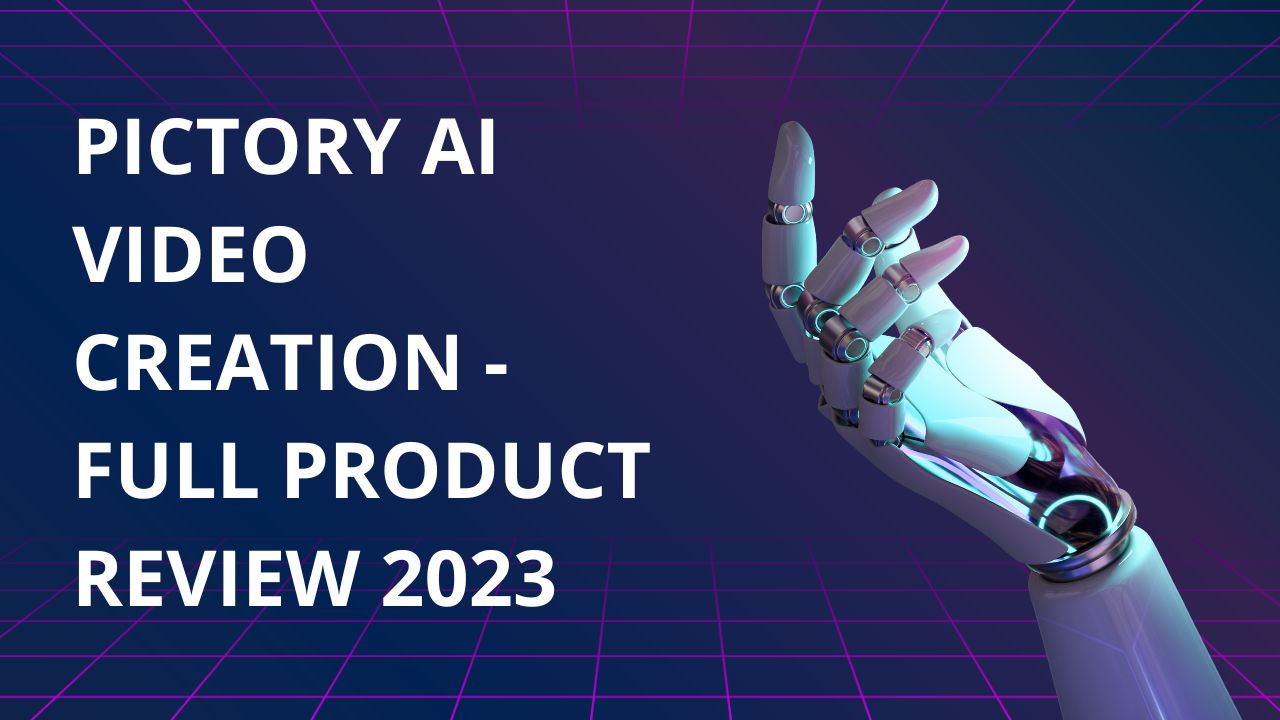What is Artificial Intelligence?
Artificial Intelligence is a multidisciplinary field of computer science that focuses on creating machines, systems, or software applications capable of performing tasks that typically require human intelligence. These tasks include but are not limited to problem-solving, reasoning, learning, understanding natural language, recognizing patterns, and adapting to new situations.
Types of AI: Narrow vs. General AI
Artificial Intelligence can be categorized into two main types:
Narrow AI (or Weak AI): Narrow AI is designed to perform specific tasks or solve particular problems. It excels in a predefined domain and does not possess general intelligence or consciousness. Examples include virtual personal assistants like Siri and Alexa, recommendation systems, and image recognition algorithms.
General AI (or Strong AI): General AI represents the hypothetical goal of creating machines that possess human-like intelligence and are capable of performing a wide range of tasks, learning from experience, and adapting to different environments. General AI remains a long-term aspiration.
How AI Differs from Traditional Programming
Artificial Intelligence distinguishes itself from traditional programming by its data-driven, learning-based approach. In traditional programming, developers painstakingly craft explicit rules and instructions to govern a computer’s behavior, while AI systems, particularly those employing machine learning, learn from data patterns and relationships. Instead of relying on handcrafted rules, AI algorithms autonomously discover these rules and adapt their performance through training.
Furthermore, AI exhibits a remarkable capacity for dynamic learning, continuously improving as it encounters new data. Traditional programs, in contrast, are static and require manual code modifications for updates. AI systems, once trained, can operate autonomously, making decisions and predictions without constant human intervention.
Which Programming Language Is Used in AI?
Here are some of the most popular programming languages for AI:
- Python: Python is the most widely used programming language in AI and machine learning. It offers a vast ecosystem of libraries and frameworks such as TensorFlow, PyTorch, sci-kit-learn, and Keras, which simplify AI development. Python’s readability and ease of use make it a favorite among researchers and developers.
- R: R is another language frequently used in AI, particularly for statistical analysis and data visualization. It has a strong community of users in fields like data science and bioinformatics. Libraries like Caret and randomForest are popular for machine learning tasks in R.
- Java: Java is renowned for its portability and scalability, making it a solid choice for AI applications requiring high performance and large-scale data processing. Java’s libraries, like Deeplearning4j and Weka, cater to various AI needs.
- C++: C++ is preferred for AI applications that demand efficiency and low-level control over hardware resources. It is often used in game development, robotics, and real-time systems. Libraries like Shark and Dlib provide AI capabilities in C++.
- Julia: Julia is gaining popularity in the AI community due to its high performance and ease of use. It’s well-suited for scientific computing and numerical analysis. Packages like Flux.jl and MLJ offer machine learning capabilities in Julia.
- Lisp: Lisp has a long history in AI research and is known for its symbolic reasoning capabilities. Common Lisp and Clojure are two dialects used in AI projects.
- Prolog: Prolog is a logical programming language often used in knowledge representation and rule-based systems. It’s especially useful for expert systems and knowledge engineering.
- Matlab: MATLAB is widely used in academia and industry for numerical computing, image processing, and signal processing tasks related to AI. It has specialized toolboxes for machine learning and deep learning.
- JavaScript: JavaScript is gaining traction in AI development for web-based applications and interactive AI interfaces. Libraries like TensorFlow.js enable AI in the browser.
The choice of programming language depends on factors such as project goals, existing expertise, community support, and performance requirements.
How to Create an AI from Scratch – Key Steps
Let’s uncover the key steps and essential considerations that will empower you to bring your own artificial intelligence project to life:
Prerequisites for Building Your AI
Before embarking on the journey to create your own AI, it’s essential to lay a solid foundation of knowledge and acquire the necessary tools and resources. This section outlines the prerequisites you’ll need to get started:
Hardware Requirements
The computational power of your hardware can significantly impact your AI development capabilities. Consider the following hardware aspects:
- CPU and GPU: Many AI tasks, especially deep learning, benefit from powerful CPUs and GPUs. GPUs, in particular, are well-suited for accelerating neural network training. You may need to invest in a computer or cloud-based GPU resources.
- Memory and Storage: AI projects often involve working with large datasets and models. Sufficient RAM and storage space are necessary to handle these resources efficiently.
Software Tools
Choose a suitable integrated development environment (IDE) for coding your AI projects. Popular options include Jupyter Notebook, PyCharm, and Visual Studio Code, all of which provide features for code editing, debugging, and visualization.
AI development heavily relies on frameworks and libraries that provide pre-built tools and algorithms. Python libraries like TensorFlow, PyTorch, and sci-kit-learn are widely used for machine learning and deep learning tasks. Familiarize yourself with these libraries to expedite your AI development process.
Data Collection and Preparation
The foundation of any successful AI project lies in the quality and preparation of the data it relies on. This section outlines the crucial steps involved in collecting and preparing data for AI development:
Data Acquisition
Publicly available datasets are a valuable resource for AI projects. They cover a wide range of domains and can save you significant time and effort. Popular sources for public datasets include government websites, academic institutions, and data repositories such as Kaggle and UCI Machine Learning Repository.
In cases where suitable datasets are not readily available, data scraping techniques can be employed to gather data from websites and online sources. Web scraping tools and libraries like BeautifulSoup and Scrapy are commonly used for this purpose.
In some scenarios, you may need to generate synthetic data to supplement your dataset. This can be achieved using data generation techniques or simulations, ensuring you have enough diverse data to train and test your AI model effectively.
Data Cleaning
Raw data often contains noise, which can be in the form of outliers, errors, or irrelevant information. Data cleaning involves the identification and removal of such noise to ensure the accuracy and reliability of your dataset.
Missing data is a common issue in real-world datasets. How you handle missing values can significantly impact your AI model’s performance. Strategies for handling missing data include imputation (replacing missing values with estimates), deletion (removing rows or columns with missing values), or creating indicators for missingness.
Data Preprocessing
Scaling features to a consistent range is crucial, especially when using machine learning algorithms that are sensitive to feature magnitudes. Common techniques for feature scaling include standardization (mean normalization) and min-max scaling (scaling to a specific range, often [0, 1]).
Many machine learning algorithms require numerical input data. To work with categorical data (e.g., text categories or labels), you need to encode them into numerical form. Techniques like one-hot encoding and label encoding are used for this purpose.
Before training your AI model, it’s essential to split your dataset into training, validation, and test sets. The training set is used to train the model, the validation set helps tune hyperparameters, and the test set evaluates the model’s performance. Proper data splitting prevents overfitting and ensures unbiased assessment.
Choosing and Designing Your AI Model
Selecting and designing the appropriate AI model is a pivotal step in making your own AI. This section delves into the various considerations and components involved:
Types of Machine Learning Models
- Supervised Learning: Supervised learning is a type of machine learning where the model is trained on labeled data, meaning it learns from examples with known outcomes. This type of learning is used for tasks like classification and regression, where the model predicts a target variable based on input features.
- Unsupervised Learning: Unsupervised learning involves training models on unlabeled data, aiming to discover patterns, structures, or groupings within the data. Common applications include clustering and dimensionality reduction.
- Reinforcement Learning: Reinforcement learning is centered around an agent that interacts with an environment and learns by receiving rewards or penalties based on its actions. It’s used in applications such as game playing, robotics, and autonomous systems.
Model Selection
- Decision Trees: Decision trees are versatile models used for classification and regression tasks. They make decisions by recursively splitting the data into subsets based on the most informative features.
- Neural Networks: Neural networks, particularly deep neural networks, have gained prominence in AI due to their ability to handle complex tasks. They consist of layers of interconnected neurons and are used in various applications, including image recognition, natural language processing, and deep reinforcement learning.
- Support Vector Machines: Support Vector Machines (SVMs) are powerful for both classification and regression tasks. They aim to find a hyperplane that best separates data points in different classes while maximizing the margin.
Model Architecture
- Input and Output Layers: The input layer of your model receives the feature data, while the output layer produces predictions or outcomes. The choice of input and output layers depends on the nature of your task, such as the number of features and classes.
- Hidden Layers and Neurons: In neural networks, the hidden layers contain neurons that process information. The architecture of these layers, including the number of neurons and their activation functions, is a critical design choice that impacts model performance.
Hyperparameter Tuning
- Learning Rate: The learning rate is a hyperparameter that controls the step size during training. It influences the convergence speed and stability of the training process. Proper tuning is essential to balance fast convergence with stable learning.
- Batch Size: The batch size determines the number of data samples used in each iteration of training. It affects training efficiency and model generalization. Smaller batches can provide noise reduction benefits, while larger batches can speed up training.
- Activation Functions: Activation functions are crucial in neural networks, as they introduce non-linearity and allow the model to learn complex relationships. Common activation functions include ReLU (Rectified Linear Unit), sigmoid, and tanh. The choice of activation function depends on the task and the architecture of the network.
Training Your AI Model
Training an AI model is a critical phase in the development process, where the model learns from data to make accurate predictions or decisions. This section outlines the key steps and components involved in training your AI model.
Data Splitting
Before training, your dataset should be split into three subsets: a training set, a validation set, and a test set. The training set is used to teach the model, the validation set helps fine-tune hyperparameters, and the test set evaluates the model’s performance on unseen data. Proper data splitting is crucial for model evaluation and avoiding overfitting.
Model Initialization
The initial values of model parameters significantly affect training outcomes. Depending on your model, you may use techniques like random initialization or pre-trained weights (transfer learning) to start the training process. The choice of initialization method can impact convergence speed and model accuracy.
Forward and Backward Propagation
During training, the model undergoes forward and backward propagation through its layers. Forward propagation computes predictions based on input data, while backward propagation calculates gradients to update model parameters. This iterative process fine-tunes the model to minimize prediction errors.
Loss Functions
The loss function quantifies the discrepancy between the model’s predictions and the actual target values. Different AI tasks require specific loss functions. For instance, mean squared error (MSE) is common for regression, while cross-entropy is used for classification. The choice of a suitable loss function is essential for guiding the training process.
Optimization Algorithms
Optimization algorithms are responsible for adjusting model parameters to minimize the loss function. Gradient descent and its variants, such as stochastic gradient descent (SGD), Adam, and RMSprop, are widely used optimization techniques. Proper choice and fine-tuning of the optimization algorithm can significantly impact training efficiency and convergence.
Monitoring Training Progress
Continuous monitoring of the training process is crucial for assessing model performance and preventing potential issues. Metrics like accuracy, loss, and validation scores should be tracked throughout training. Early stopping, a technique that halts training when performance on the validation set deteriorates, helps prevent overfitting.
Strategies for Deploying AI in Real-World Applications
Deploying AI in real-world applications is the bridge between cutting-edge AI development and solving practical problems. In this section, we will explore essential strategies for effectively deploying AI solutions in diverse real-world scenarios.
Developing APIs
By developing well-documented and user-friendly APIs, organizations can make their AI capabilities accessible to a broader range of applications and services. This approach facilitates integration into various platforms, enabling AI to be seamlessly integrated into existing workflows, mobile apps, web applications, and more. Additionally, APIs can provide standardized endpoints for data input and output, making it easier for developers to work with AI models without needing to understand their underlying complexities.
Building a User Interface
Designing intuitive and visually appealing user interfaces (UIs) ensures that end-users, who may not have technical expertise, can interact with AI systems effectively. UIs should provide easy input mechanisms, such as forms or natural language processing interfaces, and present AI-driven results in a clear and interpretable manner. Whether it’s a chatbot interface, a data visualization dashboard, or a recommendation system, a well-designed UI enhances user experience and encourages the adoption of AI-powered solutions.
Integrating with Existing Systems
Many organizations have established IT infrastructures and data ecosystems in place, and AI solutions must fit into these environments. To achieve this, AI systems should be designed with compatibility in mind. This may involve working with legacy systems, databases, or other software components. Building connectors, adapters, and middleware can bridge the gap between AI and existing systems, ensuring data flows smoothly, and results are integrated into decision-making processes.
Conclusion
The future of AI is bright, with countless possibilities awaiting those who are willing to explore, learn, and innovate. By following this comprehensive guide and embracing the challenge of creating your own AI, you have the potential to contribute to the advancement of artificial intelligence and make a positive impact on our ever-evolving technological landscape.











